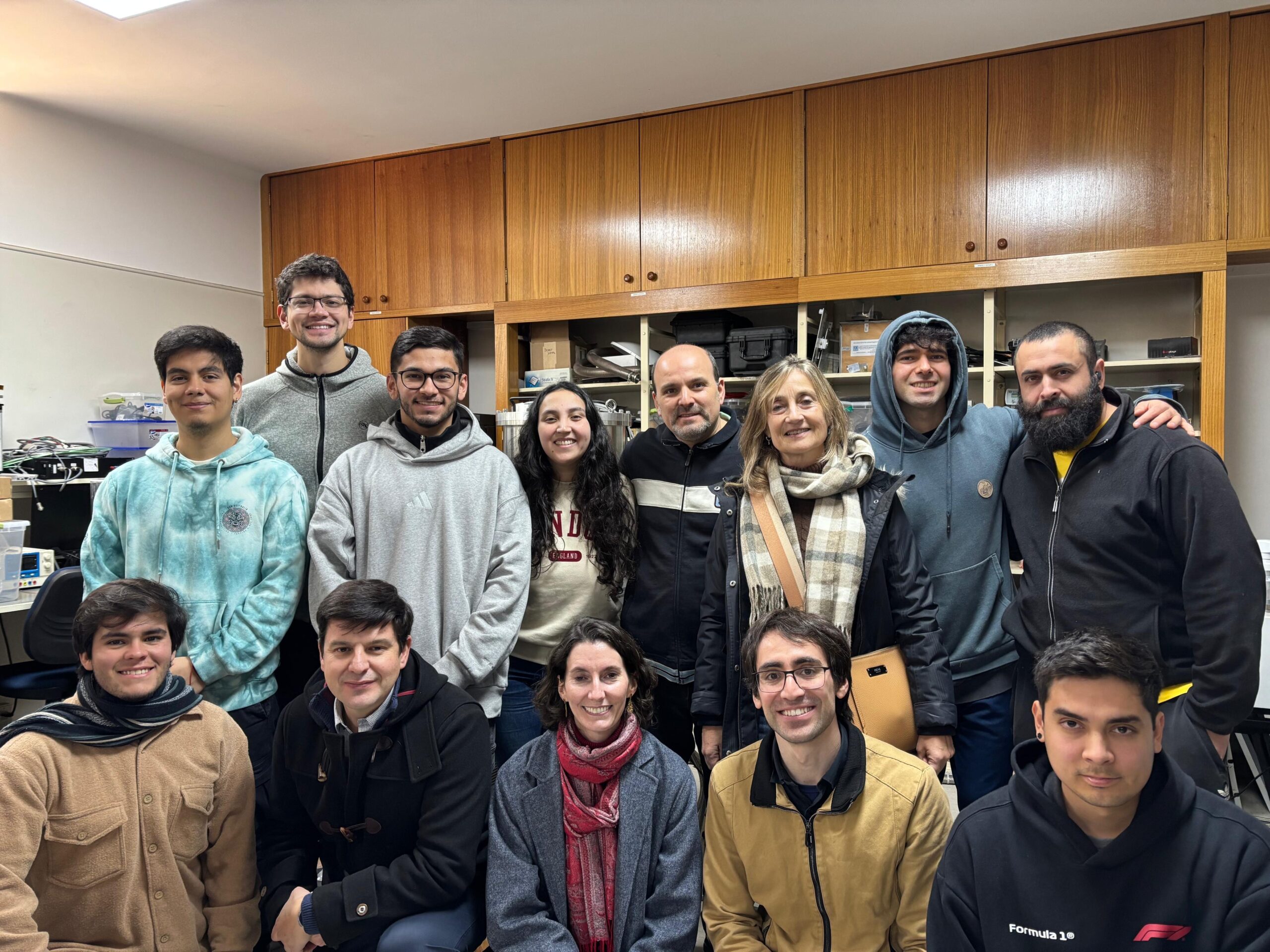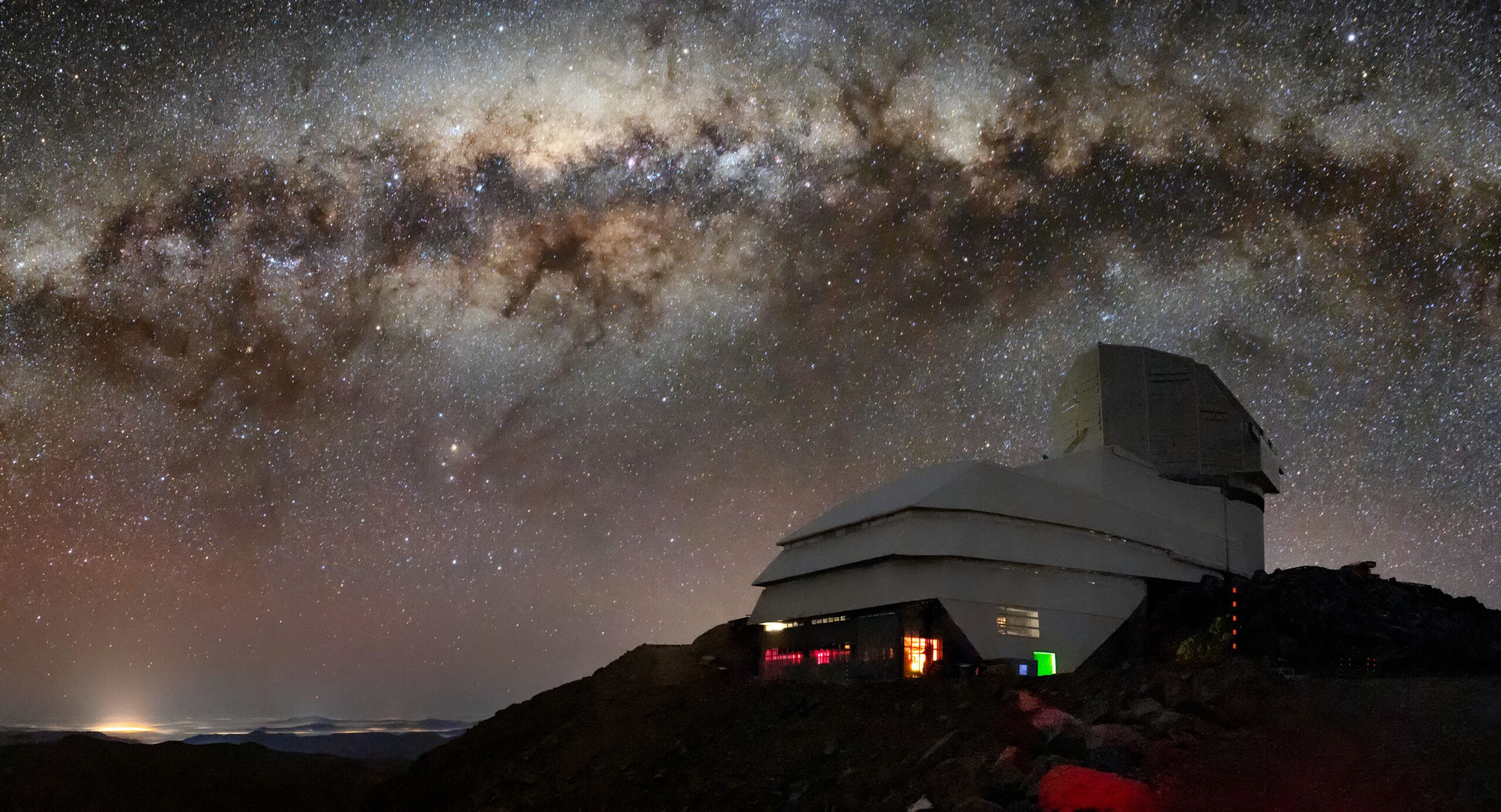
Chilean astronomer leads new scientific discoveries in a colossal galaxy
The research, carried out by an international team, was led by the astronomer of the Instituto de Astrofísica UC and researcher of the Centro de Astrofísica CATA, Gaspar Galaz. The results were published in the latest edition of the Astrophysical Journal Letters.
Malin 1 is one of the largest spiral galaxies ever observed in the cosmos. It has a diffuse disk and gigantic spiral arms, and although it has already been studied by contemporary astrophysics, it continues to present mysteries because despite being a huge galaxy, molecular gas has not yet been detected in it, an essential ingredient for a galaxy that contains – in practice – all kinds of stars.
The research confirms the absence of molecular gas to a limit twenty times lower than previously observed in the year 2000. Current evidence indicates that all spiral galaxies form stars, and therefore have dense clouds of cold molecular gas (hydrogen molecules) where stars are forming. While molecular hydrogen does not emit radiation, other molecules, such as carbon monoxide, do. It is the latter molecule, and other tracer molecules of molecular hydrogen, that remain undetected in the Malin 1 galaxy.
“Surprisingly, although we know that Malin 1 has young stars, to date no molecular gas emission has been detected by tracers such as carbon monoxide (CO), which is typically used to identify the distribution of molecular gas in galaxies,” explains Galaz, who has been studying the Malin 1 galaxy for years.
Located more than a billion light-years from the Milky Way, Malin 1 is almost seven times larger than our home galaxy with a diameter of about 650,000 light-years. Malin 1 was discovered in 1986 by a team of renowned astronomers of that time, including astronomer David Malin, hence its name. It is the first of a type of galaxy that has been called a “low surface brightness giant spiral galaxy.” “They are not very common and to date it is unknown how many like them exist. However, computational simulations indicate that there should be many more, and we should in the future detect several hundred more of them,” says Galaz, who also holds a PhD in Astrophysics from the University of Paris.
Who took my gas?
“We think that the molecular gas is there. It must be, because as we know Malin 1 even contains young stars,” says Gaspar Galaz. The new research posits that such gas could be found under different physical conditions than most spiral galaxies. “In particular, we think it is hotter, and therefore the CO molecular emission line that has been traditionally used, and in this study as well, is perhaps not the most suitable for tracing molecular gas in this type of galaxy. Another possibility would be that the molecular gas is effectively at such an extraordinarily low density that star formation has definitely ceased, except in some very specific places in the galaxy, where it is colder and denser”, adds the UC-CATA astronomer.
To achieve these results, more than 17 hours of observing time were necessary, carried out between 2018 and 2019, using the Byrd radio telescope of 100 meters in diameter, with the instrument that detects submillimeter radiation ARGUS. The Byrd radio telescope is located in Green Bank, West Virginia, USA.
It is hoped to learn more about this galaxy in future studies by targeting specific locations in Malin 1 with the ALMA radio telescope, and possibly also using other molecules that trace the molecular gas. “We also know from recent observations of ours with the VLT/MUSE (an optical instrument), that this galaxy has ionized atomic hydrogen emission in some places where stars have formed recently,” Galaz concludes.
To see the link to the original research published in the Astrophysical Journal Letters, click here.
Recent news
-
 Publicado el: 04/07/2025CATA researchers among the best in Chile according to international ranking Research.com
Publicado el: 04/07/2025CATA researchers among the best in Chile according to international ranking Research.com -
 Publicado el: 30/06/2025CATA Director strengthens ties in her second institutional tour
Publicado el: 30/06/2025CATA Director strengthens ties in her second institutional tour -
 Publicado el: 30/06/2025CATA celebrated Asteroid Day 2025 at the Pueblito de Las Vizcachas Park
Publicado el: 30/06/2025CATA celebrated Asteroid Day 2025 at the Pueblito de Las Vizcachas Park -
 Publicado el: 26/06/2025Vera C. Rubin: the telescope that watches the sky and anticipates the future of astronomy
Publicado el: 26/06/2025Vera C. Rubin: the telescope that watches the sky and anticipates the future of astronomy -
 Publicado el: 25/06/2025CATA researchers appointed as Full Professors at Universidad Andrés Bello
Publicado el: 25/06/2025CATA researchers appointed as Full Professors at Universidad Andrés Bello
Categories list
- Acknowledgments 19
- Astrobiology 5
- AstroCluster 1
- Black holes 13
- Corporativo 49
- Cosmology 4
- Descubrimientos 19
- Disclosure 46
- Exoplanets 13
- Extension 4
- Galaxies 17
- Galaxies formation 2
- Inter y Transdisciplina 2
- Local Universe 13
- Publications 5
- Sin categorizar 31
- Solar System 11
- Stellar formation 6
- Technology 9
- Technology Transfer 12


